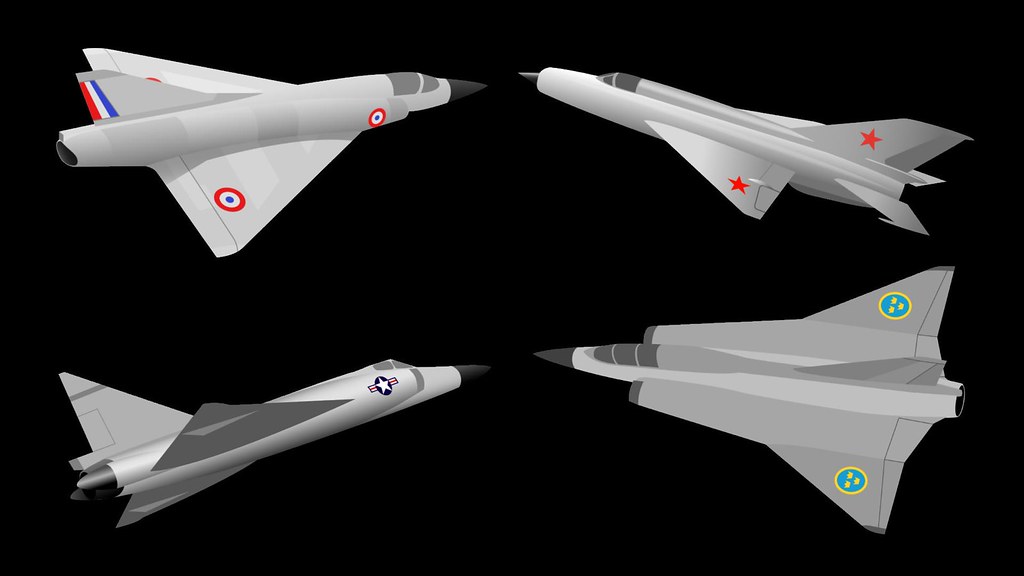Moving on to my next drawing project, I'm continuing my study of the Dassault Mirage family of aircraft. In this instance I'm looking at the early experimental prototype, the MD550...
Mini-Moi...
In many ways you can think of the MD550 - of which there were several 'versions' in itself as they tinkered with ideas - as a 'mini-Mirage'. A proof of concept it was France's leap into the delta jet age and followed the international trend which resulted in spate of famous 'deltas'...
 |
| Above: The 1960s saw a slew of delta-winged jet fighter whose origins began with ideas which were inspired by some of the advanced German designs and theories of late World War 2. Top: Mirage III and the 'tailed delta' Mig-21. Bottom: F-102 Delta Dagger and Saab 35 Draken. |
Initially known as the Mystere-Delta, the MD 550 (also known as the Mirage I) was designed to meet the requirements of a 1954 specification calling for a small all-weather interceptor fighter. However, it was concluded that the Mirage I was too small to carry an effective military load, and a slightly enlarged version, the Mirage II was proposed.
The Mirage II was only explored on paper as it was eventually decided to skip this design and go straight to a more ambitious design which became the Mirage III...
 |
| Above: The evolution of the Mirage III Family. To all intent the MD550 - known originally as the 'Mystere Delta' - was the precursor to the Mirage III fighter. |
Doodling a Delta
So, from my Mirage IIIE drawing I did recently, I am now jumping back to the start of this aircrafts conception and then will be working from there through the intermediate variants. It's a bit of an ambitious goal but it will be good practice in my goal of getting my drawing skills back to something near 'acceptable' again!
The MD550 is a pretty simple design, especially as I will be drawing a profile view and getting started wasn't too hard, but I'm trying to be a bit more organised than I was with my Mirage IIIE...
 |
| Above: Using AFFINITY DESIGNER vector drawing app I begin to lay down the outlines of the major components of the MD550's profile. This is in outline mode which reveals the bare vector lines, a good way of checking progress... |
Tracing and outline, it has to be said, isn't the hardest or the most creative process of course. It's an easy if sometimes laborious start to any vector piece based on photographic reference. Where things start to become interesting is when you get to the rendering (shading) of objects to give them a faux-3D effect.
As I showed in my Mirage IIIE post I begin with the outlines, then fill in the basic colour blocks and then start the shading using vector gradients and Gaussian blur effects to create shadows and highlights...
But even something as straight forward as tracing a photo can have it's tricky aspects. The main issue I come across when I interpret what I see in a photo is not understanding the physical mechanics of what I am looking at!
It sounds obvious, but if you are not familiar with how objects work, individually and together, then you cannot hope to produce a believable representation of those objects. Here's an example of what I mean, I have a problem with wings, for me wings in profile pose the same problems when I draw aircraft as I have with human hands when I do figure drawing!
I am one of those amateur artists who have a problem with getting hands right, and it takes multiple attempts for me to produce a representation of them that I am happy with! (It's very frustrating but quite common.) And the same is true with aircraft wings, from side-on I sometimes have a hard time understanding how to faithfully represent them. In the end I have to break down what is actually going on from several different angles - using reference photos - before I fell confident that my drawing is somewhat accurate...
 |
| Above: After studying several different photos of the MD550's wings from different angles I started to produce a simple colour-coded reconstruction of how they work in profile. Only when I am happy that I understand what is going on do I move on to adding details and shading. |
When Drawing Becomes A 3D Puzzle...
It's gotten to the point when drawing profile isn't just a pastime in itself but has become something of a problem solving exercise. It can be a challenging little mind game, like doing a crossword or a jigsaw and I really get a sense of achievement when I think I have solved a tricky bit of the puzzle but I also think I gain a better understanding of the subject itself, which - I guess - is why I like drawing 'things' in the first place.
While I know very little about aerodynamics or engineering, it the original thought process that went into these aircraft designs intrigues me and it's interesting to think that at one point the designer started out with a little doodle of his concept on the back of a scrap of paper, mulling over little puzzles in just the same way as I am doing now. 😊
In part 2 of this project I will work into the finer details of the drawing and add some colour which I hope with bring the final drawing to life!







Post a Comment